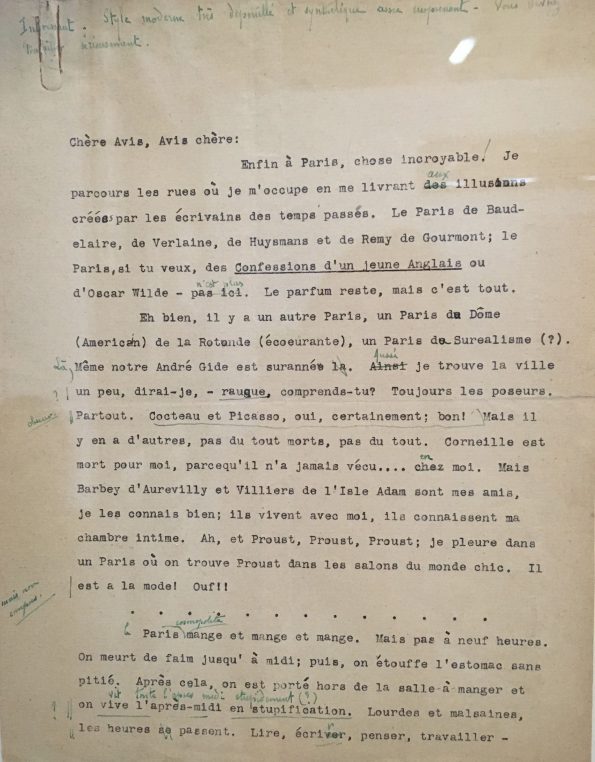American photographer Walker Evans (1903-1975) has to be one of the most popular of 20 th century artists and his shots of the Depression years commissioned by the Farm Security administration are so well known that it took me a little while to visit Centre Pompidou’s show of 400 photographs and letters. I finally went just before dinner at 7.30 pm and it was ideally filled with young handsome visitors curious of knowing more about America !
And there were no queues! What I found particularly interesting are the numerous documents around Walker Evans’s life, his personal art collection, photographs of his house and his systematic documentation of poor farmer’s lives.
He was born in Missouri in an affluent family and when he first came to Paris in 1926, he studied at the Sorbonne: there is a letter to a mysterious Avis, written as an exercise for the course , which tells us in almost perfect French what his life in Paris was like. Corrections in green are very sparse. He had been educated at Andover and Williams College where he studied French literature. He then moved to New York and there is a striking portrait of Lincoln Kirstein, cofounder of the New York City ballet, illustrating his New York years.
He collected French photography and admired Eugène Atget, whose «Marchand d’abat-jours», (Lamp shades seller) is a particularly touching shot. He also did some translations into English of poet Blaise Cendrars’ articles.
But of course his shots of street scenes and movie theatres in Havana, in 1933 when he met Hemingway, and his Alabama farm interiors (1936) where forks and knives hang on the wooden planks of the wall, are stunning. So are his architectural shots of the 1930’s in Boston and Georgia.
I was particularly struck by the very busy “Beach at Coney Island”, 1929, and loved his “Broadway signs” very efficient in black and white. One color painting, « The Shell House », done later in life is intriguing. The photographs are mostly in small formats and so numerous that one feels like discovering a whole new country through his eyes.
His talent at story telling through documenting the very poor deep South of Akron, Alabama, and the aesthetics he transmitts to street scenes are a major pleasure. He died in New Haven having taught photography at the Yale art school for ten years. And his archives are all at the Metropolitan museum of Art.
If you feel, like I pretentiously did, that you know all about Evans, try to visit the show, you will be surprised ! (Centre Pompidou, until August 14)
Share this Post






One Comment on “Walker Evans revisited at Beaubourg”
Look forward the visiting anexhibition of one of my favourite photographers!